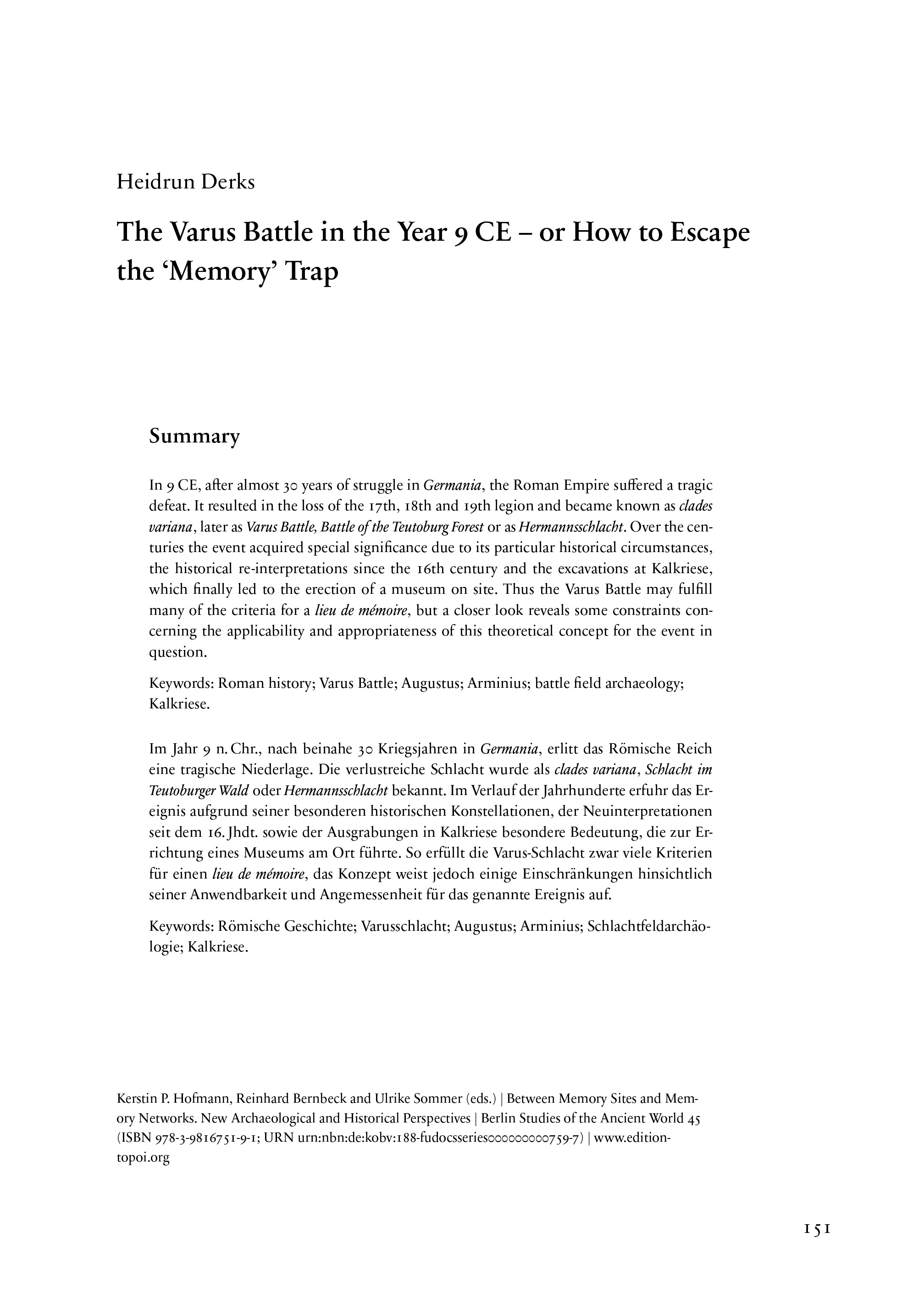The Varus Battle in the Year 9 CE – or How to Escape the ‘Memory’ Trap
In 9 CE, after almost 30 years of struggle in Germania, the Roman Empire suffered a tragic defeat. It resulted in the loss of the 17th, 18th and 19th legion and became known as clades variana, later as Varus Battle, Battle of the Teutoburg Forest or as Hermannsschlacht. Over the centuries the event acquired special significance due to its particular historical circumstances, the historical re-interpretations since the 16th century and the excavations at Kalkriese, which finally led to the erection of a museum on site. Thus the Varus Battle may fulfill many of the criteria for a lieu de mémoire, but a closer look reveals some constraints concerning the applicability and appropriateness of this theoretical concept for the event in question.
Im Jahr 9 n. Chr., nach beinahe 30 Kriegsjahren in Germania, erlitt das Römische Reich eine tragische Niederlage. Die verlustreiche Schlacht wurde als clades variana, Schlacht im Teutoburger Wald oder Hermanns-schlacht bekannt. Im Verlauf der Jahrhunderte erfuhr das Ereignis aufgrund seiner besonderen historischen Konstellationen, der Neuinterpretationen seit dem 16. Jhdt. sowie der Ausgrabungen in Kalkriese besondere Bedeutung, die zur Errichtung eines Museums am Ort führte. So erfüllt die Varus-Schlacht zwar viele Kriterien für einen „lieu de mémoire“, das Konzept weist jedoch einige Einschränkungen hinsichtlich seiner Anwendbarkeit und Angemessenheit für das genannte Ereignis auf.

